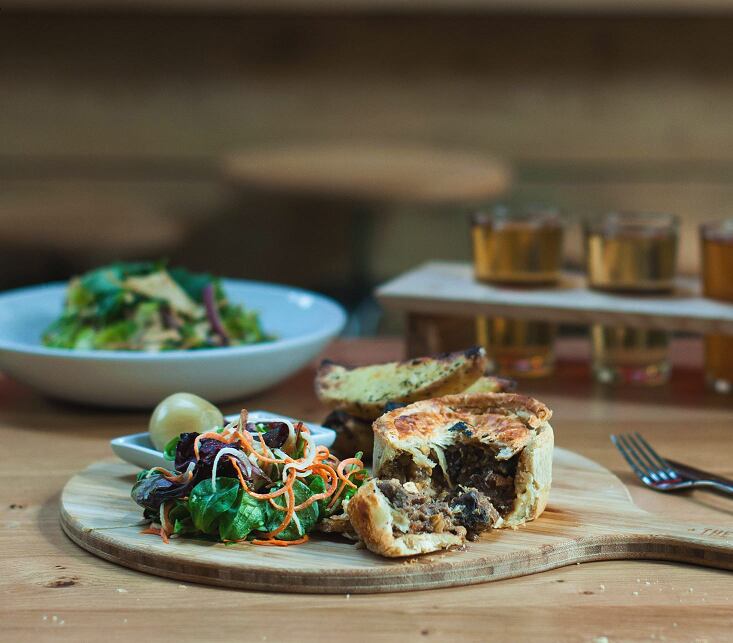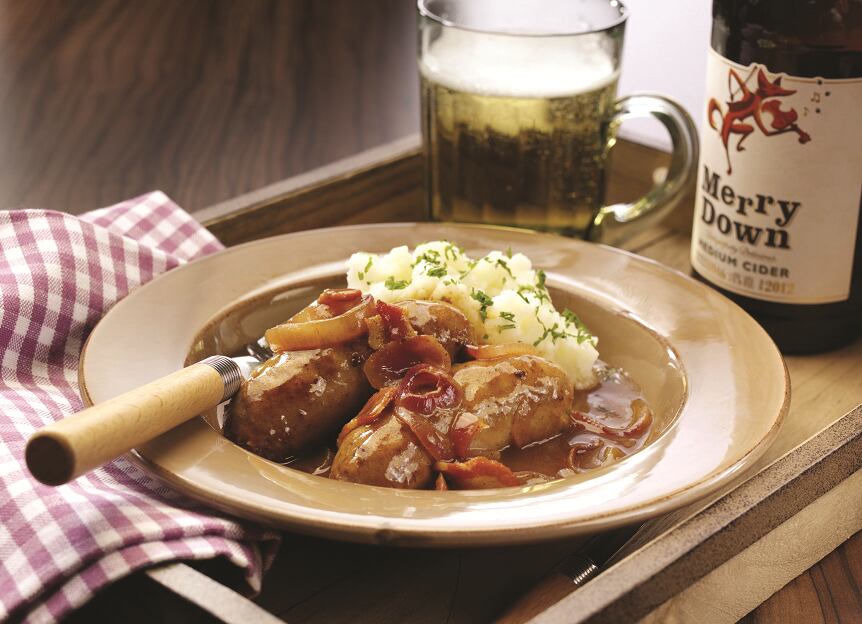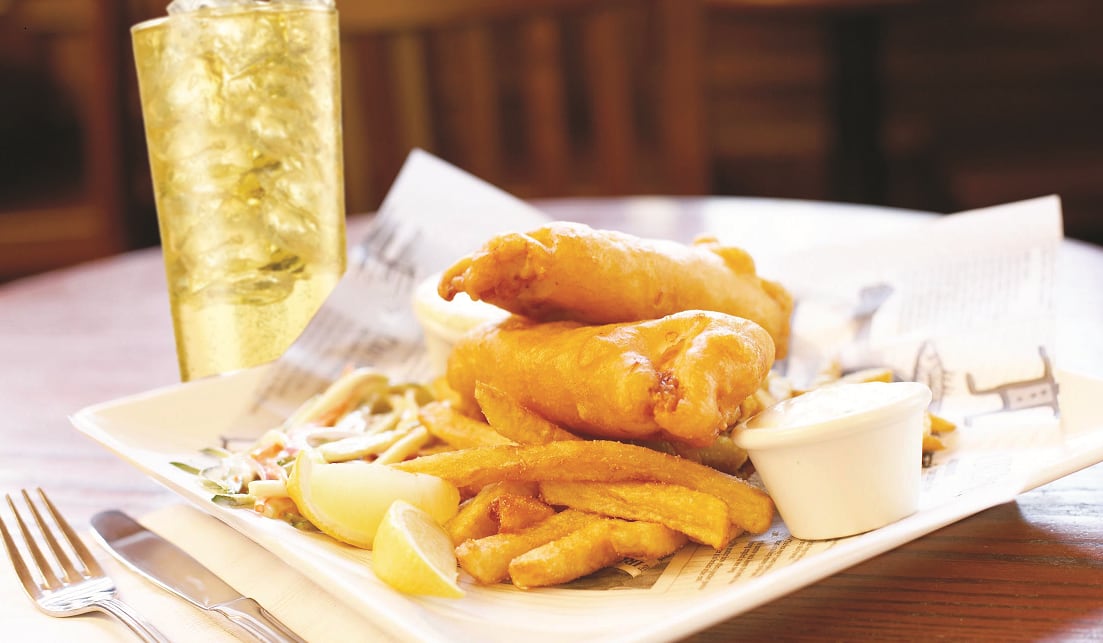What dishes come to mind when you hear the words cider and food matching? Pork pie, a ploughman’s lunch? Well, that very short list sums up the conundrum that many people have when it comes to this particular pairing.
Thinking of dishes to pair with cider can be difficult for those starting out, who often steer towards fruit crumbles or other dishes with apples and pears in them.
But, the answer is to forget that and treat cider just like you would wine. We don’t match wine with foods that go well with grapes, rather we consider acidity, tannins and body, which cider has in abundance.

For this to become the rule in your operation, though, it’s important to remember several important factors, which are: choice, education and enthusiasm.
In the main, this means pubs must stock a range of cider styles; staff must be educated in how to match cider with food; and staff should also be encouraged to upsell a cider to give customers confidence it is a “proper” drink to go with food.
Yet, unfortunately, opinion ingrained in many front-of-house staff and customers, for that matter, is that the “proper” drink to match with food is wine.
Don’t want to know more about cider?
Few people know a lot about cider and so can’t make an informed choice when it comes to matching one with food. Perhaps they don’t want to know more about cider? But that’s why education is so crucial.
Some UK cider makers, such as Thatcher’s and Aspall’s, have been enthusiastic advocates of cider and food matching for some time. There is also Fuller’s growing chain of casual-dining restaurants under the The Stable banner that focuses on pizza and cider.
As Gabe Cook, cider maker and spokesman for the National Association of Cider Makers says: “Cider makers realised a while ago the potential of matching cider with food. Many of our members actively support and promote this through their website, trade media or by hosting events, as they should, because cider has the quality and versatility to be the equal of wine when finding the perfect accompaniment to any meal.”
Thatcher’s recently re-opened Railway Inn cider house and kitchen in Sandford, Somerset, is an elegant gastropub with a menu filled with exciting food. Importantly, it offers an inclusive selection of cider, which customers are encouraged to pair with dishes from the menu.

Managing director and fourth-generation cider maker Martin Thatcher explains: “We have included tasting notes for each of our ciders and have suggested the style of food they might pair with – just as we have done for the wines we serve.
“The waiting staff are all trained and knowledgeable about the seasonal menus and the characteristics of our ciders and gladly offer advice and guidance to customers on how to choose. Everyone is very enthusiastic and it adds something different to the offer.”
Anyone searching for cider and food nirvana are likely to find it in Herefordshire at the Crown Inn, Woolhope. This village pub won Cider Pub of the Year at the Great British Pub Awards 2015. Owner Matt Slocombe ensures his team have the knowledge to advise customers on the extensive list of local ciders and to suggest the best match for the ever-changing menu of locally-sourced food.
Asked what type of cider works best with food he says: “High juice, bitter sweet and bitter sharp. These have the depth of flavour and character to carry through with food.”
A popular dish at his pub is local rabbit sausage with truffle mash and kibbled onion gravy. Matt recommends Wilce’s medium dry with this dish because “it has good acidity to match the subtle gaminess of the rabbit and the earthy truffle in the mash”.
Largely under-appreciated
Despite cider being a staple of many pubs’ drinks offers, it is still largely under-appreciated by the majority of operators.
You would be pushed to find a food pub or restaurant today that offers customers just one wine option, yet most do that with cider.
What has Pomona done to deserve being so disrespected? Mr Foley’s Tap House in Leeds is on the short list for Best Cider Pub at the Great British Pub Awards 2016. Manager Jason Allison gives his advice for creating a comprehensive cider offering.

“Our range always has a minimum of 24 traditional ciders. I make sure there’s a selection of different styles, strengths, cider producing regions, producers and anything interesting I can get my hands on,” he says.
In an ideal world, cider producers would include information about acidity, tannins, sweetness, dryness of their products on websites, bottles, pump clips/badges and point-of-sale material, then it would be easier for drinkers to learn and for staff to advise.
But if you’re thinking of lost profits from wine sales, banish those thoughts! With most ciders coming in at below 9% ABV, customers are more likely to order additional glasses or bottles where they might not with wine.
As Allison adds: “Driving traditional cider has not only improved our turnover and profitability, it also creates a buzz for customers. It’s a talking point, a USP and sets us apart from the competition.”
Apple of your eye:
- Acidity in cider efficiently cuts through fat, adding a range of flavours to the dish and acting as a palate cleanser. It also acts as a counterpoint to sweet food. Foods that benefit from acidity in cider include fish, chicken, pork, cheese, pies, spicy food and many pasta dishes. Aspall’s Premier Cru would pair well with these ingredients.
- Tannins are compounds found in apple skins, pips and stalks that register in the mouth as dryness and often bitterness. They are attracted to and attach to fatty proteins in food thereby stripping them from the palate, refreshing it for the next mouthful. The more fatty, textured or chewy the food, the higher the tannins necessary to manage it.
- When tannins manifest as bitterness these ciders are a contrast for sweet foods. Foods that benefit from tannins in cider include steak, game, pork, lamb, duck, mushroom dishes. Sheppy’s Kingston Black would pair well with these ingredients.
- Sweetness: with the exception of bone dry styles, cider has degrees of sweetness. Sweetness contrasts with salty food, it mellows spice, balances rich foods, and complements desserts. Foods that benefit from sweetness in cider include charcuterie, ham, cheese, squashes, root vegetable dishes, desserts. Thatcher’s Red Streak & Katy would pair well with these ingredients.
